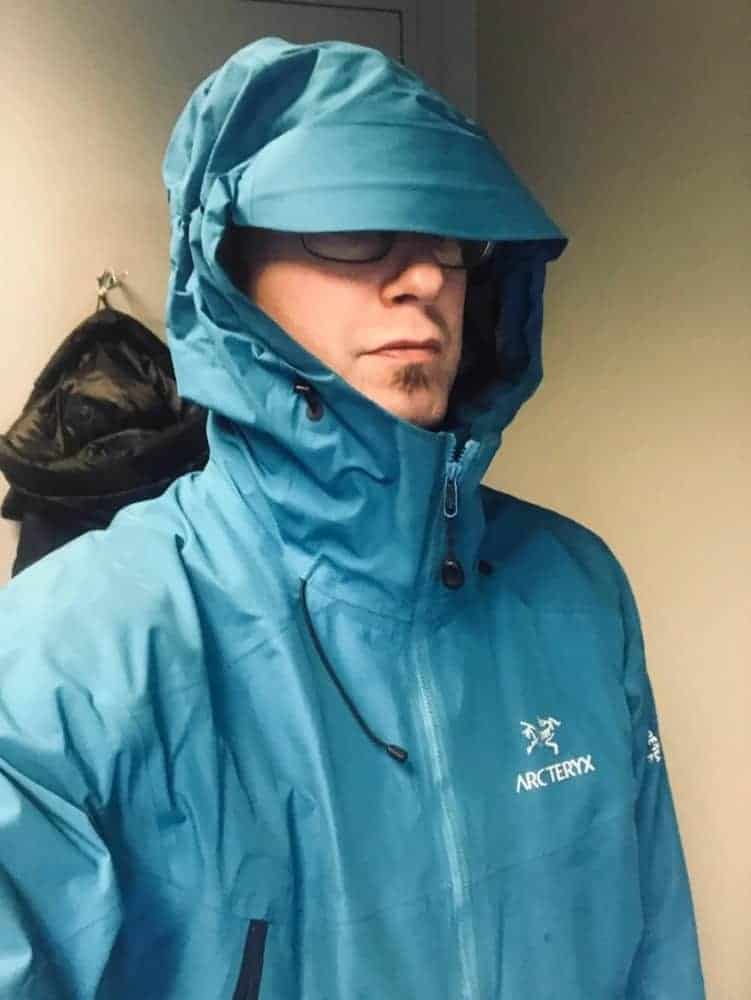Along with falling leaves, this season also brings an abundance of rain. Let us show you the different types of raincoats so you can take your pick.
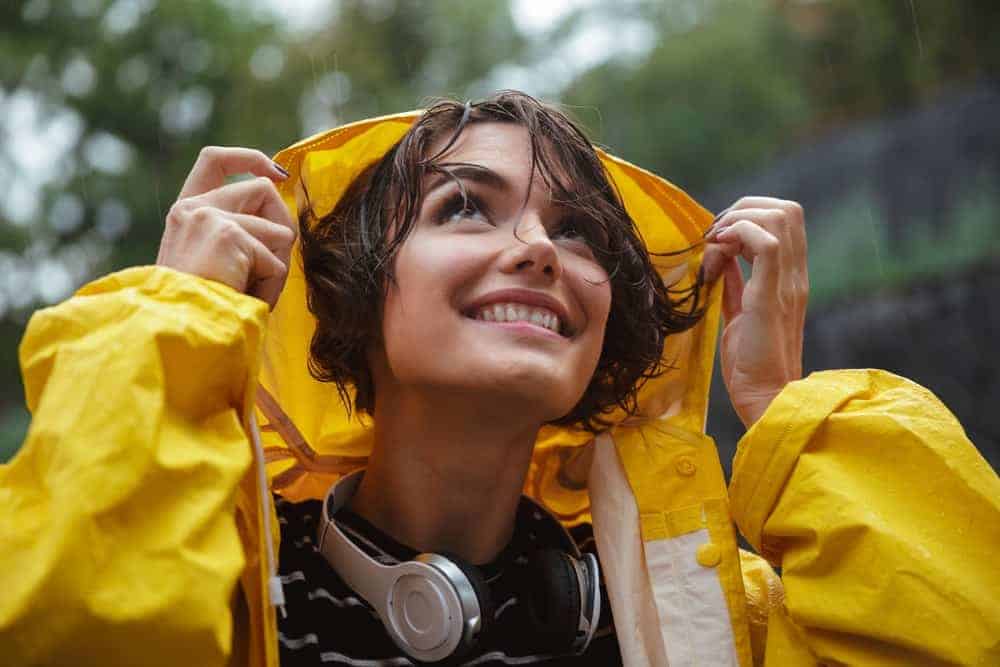
Rain has a way of immediately putting people in a bad mood. It’s cold, it’s wet, it’s gray…let’s face it, rain is depressing. When water is literally falling out of the sky on you, it’s really hard to maintain a positive attitude. But it does help a lot if you’re comfortable and dry. That’s what raincoats are all about. And while you may think of them as a rather modern invention, the first raincoats are probably way, way older than you think.
Contents
Raincoat History
Native Americans living in the Amazon used a crude but effective method of waterproofing their clothing hundreds of years ago. They coated items in rubber to create a waterproof finish. Europeans who came to the region in the 1500s noticed the waterproofing and began to experiment with designing their own waterproof items. Francois Fresneau designed a waterproofing fabric in 1748. Others improved upon his idea. The first raincoat was made by G. Fox of London in 1821. It was called Fox’s Aquatic.
Despite the cool name, that first raincoat wasn’t all that successful at blocking the rain. Like the Native Americans, early raincoat makers used rubber. The problem was, the rubber became hard and inflexible in cold weather. In hot weather, the clothes got sticky. A man named Macintosh fixed these problems.
Macintosh invented his technique for waterproofing fabric in 1823, a design that puts a layer of molded rubber between two layers of fabric that was treated with a special liquid. But it took an American to put the final touch on this method. His name was Charles Goodyear, a man from Philadelphia. He figured out how to vulcanize rubber, a process that makes rubber stretchier and easier to work with. Finally, someone took Macintosh’s fabric and Goodyear’s vulcanized rubber and created the modern raincoat.
More waterproof fabrics followed and more innovations in the industry were made. Now, there’s a bunch of different types of raincoats to try.
Types of Raincoats
Raincoats come in a huge variety of styles and fabrics now. Which type suits your style best…and which type will keep you dry?

The all-weather trenchcoat was invented by Thomas Burberry for WWI soldiers. They were made with fine gaberdine cotton that was chemically treated to repel the rain. When the war ended, the raincoats continued to be a popular fashion choice. Trenchcoats have wide lapels and a collar, with a dual row of buttons down the front and a cloth belt to cinch around the waist. Trenchcoats fall to at least mid-though and may be much longer.

Ponchos are made to keep you totally dry even in the worst rain. This is a very wide, open garment that you slip on over your head. Ponchos typically fall to about hip-length, though they may go down as far as your knees. They’re often made with an attached hood.
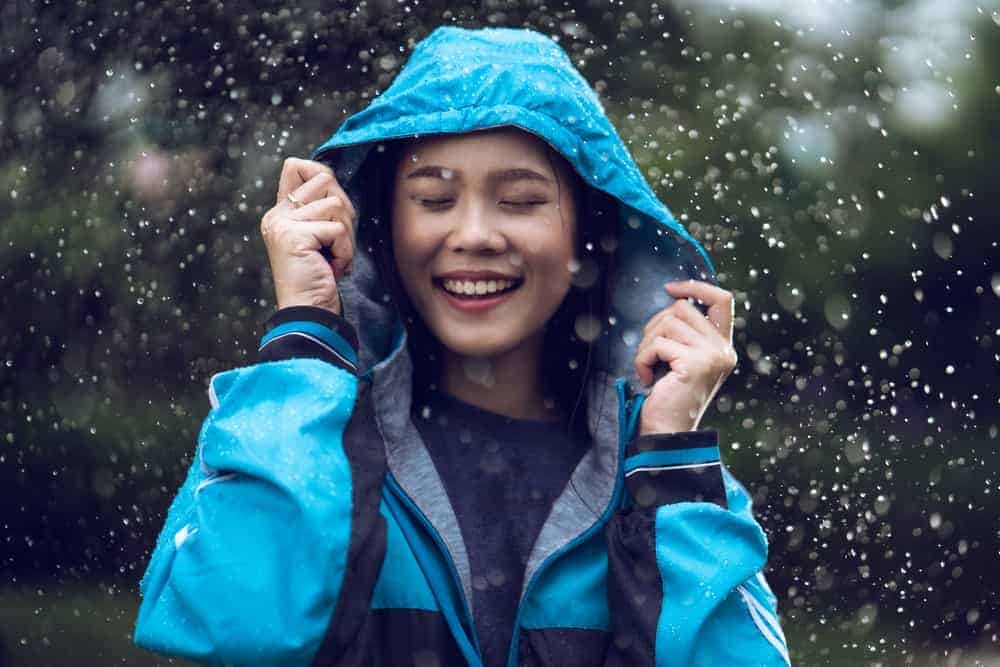
Rain jackets are usually short jackets that fall to waist or hip length. They may be collared or hooded and close with buttons, zippers, or toggles. However, they almost always close with a zipper or have a multiple closure design to keep out moisture.
Types of Weather Protection
Not all raincoats will keep you completely dry. It’s important to know the difference in types of weather protection provided by different raincoats.
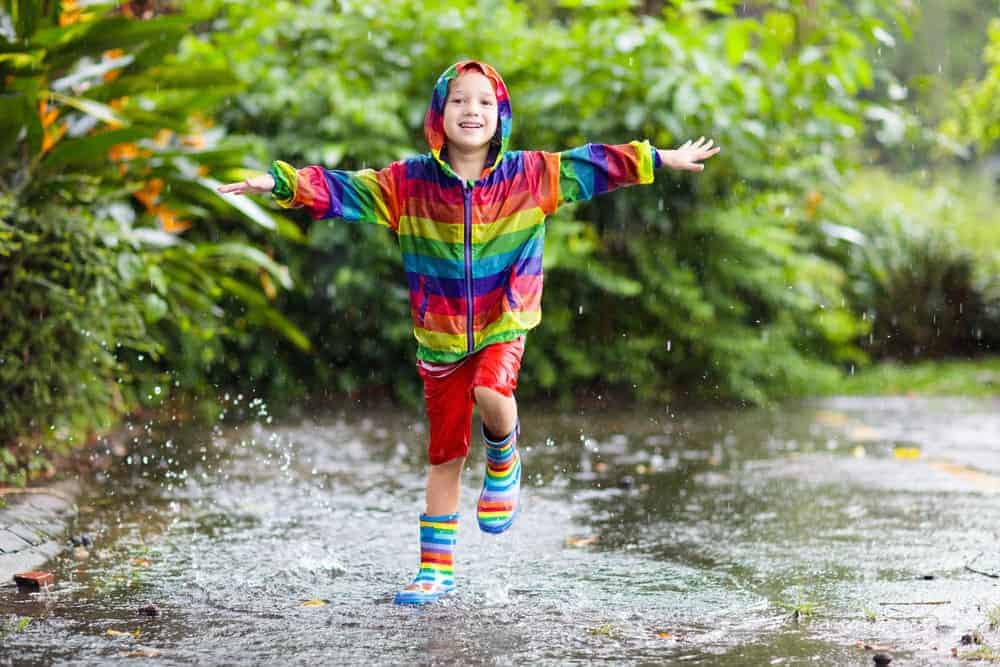
Waterproof raincoats are designed to completely prevent water from soaking through the material and getting to you. This is the most effective protection against rain.

Water-resistant raincoats can keep you dry in light rain or for a short period of time. In heavy rain, or over a long period of time, the water will soak the material and get you wet.
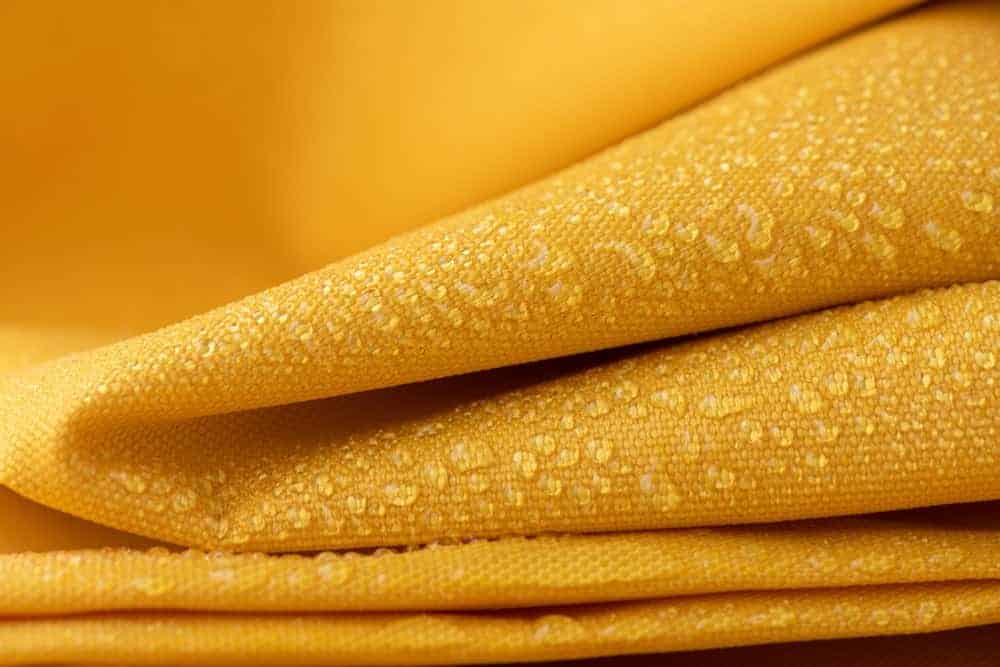
Water-repellent raincoats, which may be labeled “DWR” for durable water-repellent, have a special finish that makes water bead up and rolls off the material. Water-repellent does not mean the same thing as water-resistant.

Breathable raincoats can be water-resistant or waterproof. “Breathable” simply means that the material will not hold in your body heat, so you will not get overheated and sweat. It means the fabric can help you stay cool even as it protects you from the rain.
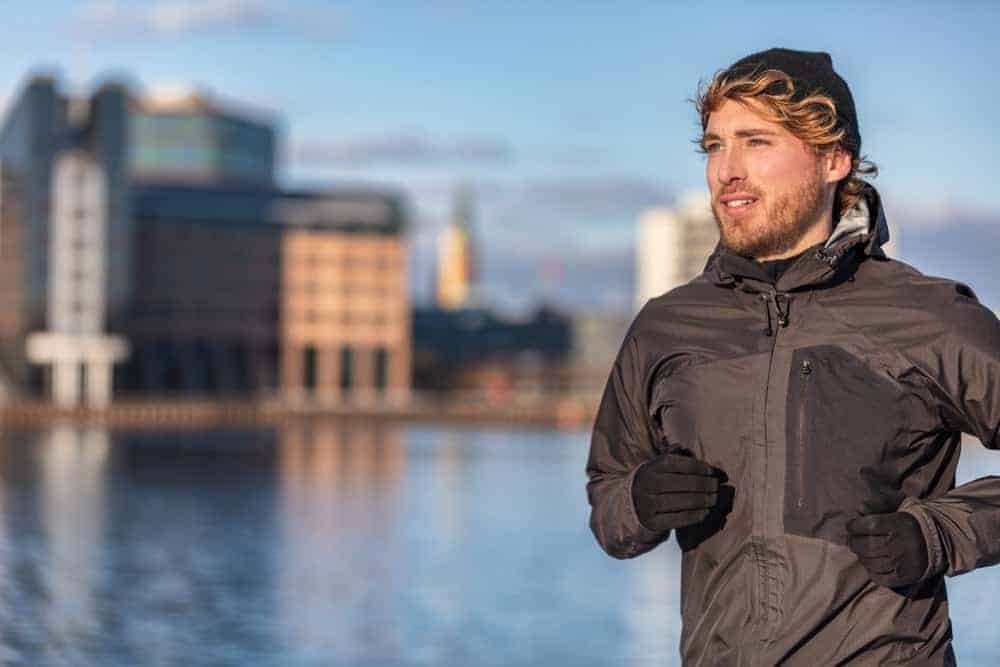
Windproof jackets are not necessary waterproof or water-resistant in any way. When a raincoat is windproof, it can’t be penetrated by sharp gusts of wind.
Raincoat Features
Raincoats are made with all sorts of special features to keep them (and you) protected from the rain. We’ve come a long, long way from coating fabric with rubber. Modern raincoats are made with chemically-treated fabrics and synthetic fabrics that repel and resist water. Raincoats can be made from any fabric, including cotton, wool, vinyl, and plastic.
Waterproof raincoats are often made with seam taping. The seams are taped in order to seal them, so they’re protected from water. Water-resistant jackets are often seam-taped as well, so don’t expect all seam-taped coats to be fully waterproof.
Many raincoats are made with zippers to help you get a tight seal against the rain. The zippers are typically coated to make them more water-resistant. Usually, there is a zipper cover or the coat is designed in a way to keep the zipper covered with fabric. This prevents water from seeping in between the teeth of the zipper.
Raincoats can be lightweight or heavy depending on the design and the style. Trenchcoats are typically somewhat heavy and made to be warm and insulating. Vinyl rain ponchos, on the other hand, are usually very lightweight and cool. Some raincoats may be insulated for additional warmth.
Why Are Raincoats Yellow?
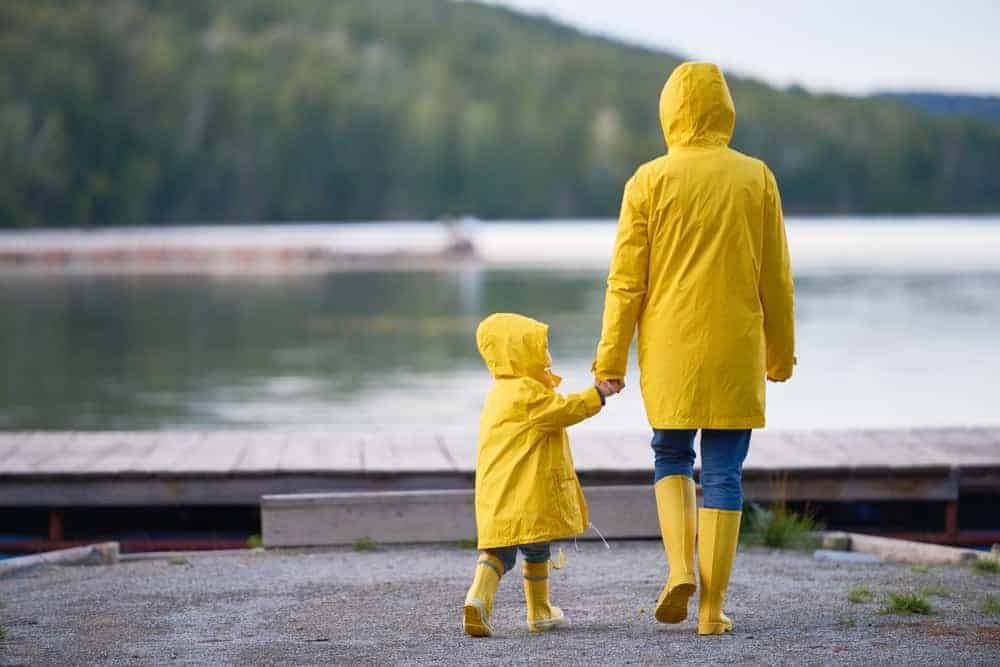
The yellow raincoat is an iconic image. In fact, it’s probably what you’ve been picturing. But why are raincoats yellow? An exhaustive search did not reveal one specific answer. The general opinion seems to be that yellow makes you more visible in dark, gloomy rain. It’s also the color of sunshine, so yellow raincoats add brightness when the rain is hiding the sun. A pop of yellow is a great way to brighten up a gray, rainy world, so why not?
Dressing for the Weather
It’s bad enough that it’s raining outside. Don’t make things worse by letting your clothes get wet, too. Get the right type of raincoat to protect you from the weather and get ready to take on the world…no matter how wet it gets.



